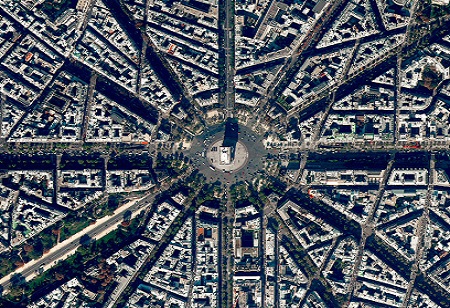
Due to urbanization and rising demand for downtown development, the creation of mixed-use spaces has drawn the attention of many architects and developers. Urban areas are changing due to this trend, which is also reviving many neighborhoods with social and economic activity. Buildings or complexes that merge two or more residential, commercial, cultural, institutional, and/or industrial functions are known as mixed-use developments.
As a revolutionary method of urban planning and design, mixed-use developments have grown in popularity. Mixed-use developments produce vibrant, livable, and sustainable urban environments by integrating residential, commercial, and frequently cultural or recreational features into a single development. By combining various functions, the live-work-play experience will be improved, providing locals and visitors with a well-rounded experience. In addition, mixed-use developments have grown to be a highly sought-after investment opportunity, drawing in a wide spectrum of investors. Some of the ways in which Mixed-use development has helped in addressing the challenges of urban planning include:
A mixed-use complex seamlessly combines commercial and retail elements, giving inhabitants easy access to nearby restaurants, shopping, and other services, reducing the need for residents to make long commutes to get what they need every day. Over 3,000 persons living in the 50 largest urban markets were polled as part of a recent study by the National Association of Realtors (NAR) to better understand their transportation choices. The study found that most Americans favor communities with walkable neighborhoods. Additionally, according to research, more than half of Americans would choose to bike or walk instead of driving.
According to the Environmental Protection Agency (EPA), a typical passenger car emits about 4.6 metric tons of carbon dioxide yearly. Furthermore, the Harvard School of Design defined mixed-use as having a variety of applications inside a single development, provided that no one use does not occupy more than 60% of the total area. Thankfully, research has shown that certain urban design techniques might lessen this environmental impact. Individual resident vehicle miles traveled (VMT) can be significantly decreased in places with high densities, varied land uses, and good pedestrian access. Thus, by encouraging alternate forms of mobility like walking, biking, and public transportation, these areas can promote sustainable cities that lessen reliance on personal vehicles and contribute to a greener and more ecologically conscious future.
"While designing products, one needs to look at various aspects of design and engineering since it is at this stage that costs are determined. Innovation in design and engineering is one of the more important aspects that affect supply chain – the ability to source at the right price and in time," says Harish Babu, CEO - Interiors Division, Sobha Ltd.
Interaction between residents, employees, and visitors is encouraged by the close proximity of mixed-use developments to one another. Having utilities nearby makes it simple to engage in social activities, such as meeting up for a cup of coffee or running into acquaintances at a nearby eatery. In addition, mixed-use complexes usually have attractive public spaces like plazas, parks, or community centers. Chance meetings and casual conversations are encouraged in these settings. Holding events, festivals, and activities in public spaces can promote a sense of community and camaraderie among residents and tourists.
Families, business owners, and professionals are among the tenants drawn to mixed-use developments by the variety of spaces. A broad variety of people with different backgrounds and interests results from this diversity. A diverse tenant mix fosters a sense of inclusivity, fosters conversation, and fosters collaboration. According to research, people who live in inclusive communities exhibit higher levels of creativity, entrepreneurship, and economic competitiveness. These characteristics are essential for promoting economic growth and raising productivity.
In a mixed-use development, the mixing of several income streams improves resilience to market volatility. For instance, the steady income from residential rents can help to mitigate the effect if the demand for commercial space declines during an economic crisis. This variety of revenue streams lessens the investment's reliance on a single market sector, making it more flexible and resistant to rapidly shifting market conditions.
By providing a wide variety of retail, residential, and commercial spaces in one area, mixed-use complexes appeal to a wider market group. This broadens the pool of prospective customers and renters and raises market demand for the development. These initiatives can appeal to those looking for accessibility, convenience, and a thriving community by providing a wide variety of offerings.
A holistic and creative approach to urban planning and design, mixed-use development results in thriving and sustainable urban environments. Mixed-use developments have the power to influence the future of our communities by prioritizing careful planning, smart design, and a focus on community well-being. This will improve livability and promote economic vibrancy.
Future mixed-use development trends look bright and are consistent with shifting society requirements and tastes. As developers work to construct environmentally responsible communities, sustainability and green design will assume a prominent role. Technology will be used in smart and connected spaces to improve convenience and resource management. Amenities that emphasize wellness will advance both physical and emotional health. These trends will create environments that are lively and welcoming and put inhabitants' comfort and community sustainability first.
We use cookies to ensure you get the best experience on our website. Read more...